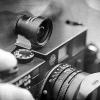Using more than one scanner with Silverfast 8-Installation Workflow
-
Recently Browsing 0 members
- No registered users viewing this page.
-
Similar Content
-
- 0 replies
- 210 views
-
- 0 comments
- 482 views
-
- 11 replies
- 833 views
-
- 1 reply
- 273 views
-
- 1 reply
- 187 views
-



Recommended Posts
Join the conversation
You can post now and register later. If you have an account, sign in now to post with your account.
Note: Your post will require moderator approval before it will be visible.